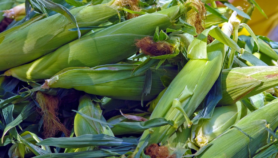Send to a friend
The details you provide on this page will not be used to send unsolicited email, and will not be sold to a 3rd party. See privacy policy.
Fish production could be boosted by exploiting Sri Lanka’s man-made reservoirs. Anuradha Alahakoon reports on the challenges and progress so far.
A fishing boat arrives at the shore of Angamuwa reservoir, a small water body hidden in a distant village in the North Central Province of Sri Lanka. A fisherman gets out. He fills a basket on his bike with fish and roams the neighbouring village shouting ‘maalloo’ (fish) to attract customers.
He is one of the fishermen who make their living out of the reservoir. It is an uncertain occupation but one that Sri Lanka’s scientific community is hoping to make more secure through better use of such reservoirs and improved fishery methods.
Using ancient reservoirs
There are over 12,000 small man-made reservoirs in Sri Lanka, some dating back over 2,000 years. They are part of Sri Lanka’s ancient civilization, in which rulers built reservoirs for rice cultivation.
It is hoped that such reservoirs could be used for culture-based fishery (CBF) ― a combination of a traditional fishery and an artificial aquaculture practice.
Aquaculture practice is the introduction of small fish ― or any aquatic organisms ― into a water body, which are reared until they are mature enough for harvesting.
With CBF, suitable reservoirs are selected and stocked with small fish called ‘fingerlings’, which are eight to ten centimetres long. They live and grow in the water until harvesting.
“The total extent of small reservoirs is about 40,000 hectares and the government plan is to develop at least 10,000 hectares annually,” says Upali Amarasinghe, a fisheries biologist at the University of Kelaniya, Sri Lanka.
“They have introduced CBF to about 5000 hectares, meaning that it currently operates in only 12−15 per cent of the seasonal reservoirs and small village reservoirs,” he adds.
The science of CBF
| Stocking a reservoir with fingerlings |
| Credit: Asanka Jayasinghe / University of Kelaniya |
Scientists have suggested how to practice CBF in Sri Lanka. First, suitable reservoirs should be selected using physical and biological criteria.
Amarasinghe says that CBFs are suitable for small reservoirs of less than 30 hectares, which would otherwise not be able to support a commercially profitable fishery.
The number of fingerlings to be stocked — the stocking density — are considered, as well as which species of fish are most suitable.
“Stocking of a suitable reservoir with the right combination of fish species is a promising means of increasing fish production,” says Amarasinghe.
Water bodies that are abundant in water plants may not be suitable because plants use up nutrients in the water and inhibit algae growth. Algae are a major food source for fish and their reduction affect fish stocks. Water plants can also be a problem when harvesting fish, because they can get tangled in nets.
As small reservoirs dry out in hot seasons, it is also important to consider which months water is retained so that the selected fish have time to mature ready for harvesting. For example, carp need at least six months to mature, so the selected reservoir should retain water for at least this time.
A history of downfalls
The first study on CBF was published in 1965 by AS Mendis; a preliminary survey of 21 Ceylon lakes. This study showed that small water bodies could be used for CBF. Several trials looked at a few reservoirs stocked with Thilapia (Orechromis mossambicus) fingerlings and eight small reservoirs in the north central province stocked with milk fish (Chanos chanos) in 1963.
Although local scientists have documented Sri Lanka’s potential for CBF since the 1960s, the government did not pay much attention until the UN Food and Agriculture Organization (FAO) made recommendations in the 1980s on the basis of findings made by Sri Lankan scientists.
The FAO, the UN Development Programme and the Asian Development Bank funded CBF projects in 1980 and 1984. But the lack of guaranteed fingerling supplies, proper marketing, institutional clashes and inappropriate choices of water bodies meant these projects were unsuccessful.
Projects also lacked proper institutional coordination. Small village reservoirs came under the jurisdiction of the Department of Agrarian Services, while aquaculture was handled by the Ministry of Fisheries. Changing governments led to changing policies and there was no coherent long-term strategy.
In 1990 the Sri Lankan government decided to stop state support for the inland fisheries sector. This continued till 1994 and it was not until 2000, when a revised Agrarian Development Act was made, that adequate legal arrangements for the development of CBF in small reservoirs were made.
The right track?
Is Sri Lanka on the right track to using this vast resource? Currently, the government authority that coordinates CBFs is the National Aquaculture Development Authority.
Jayantha Chandrasoma, director of an active CBF project, says, “we hope to utilise seasonal tanks and small perennial reservoirs to stock fish and enhance fish production.”
“We think that fingerling production is far more effective when we employ small-scale entrepreneurs to do it. In Anuradhapura district, we are happy to say that this is successful.”
One major obstacle is getting enough fingerlings for the CBFs. As part of the current project, some villagers rear fry up to the fingerling stage to sell to reservoirs with CBF operations.
However, rearing fingerlings is an uncertain business. As Amarasinghe explains, “CBF in seasonal reservoirs is dependent on the natural event of reservoir-filling during the inter-monsoonal rains in November to December. There is no assurance that farmers who rear fingerlings will be able to sell them in the drought years when reservoirs do not fill.”
Due to the uncertainty of income, most rural people do not see fingerling rearing as a way of living.
Another problem can be that fingerlings stocked in CBF systems are too small, often less than seven centimetres. In countries like China, the stock size is 13−14 centimetres. Stocking small fingerlings will result in a high mortality rate, lowering the CBF yield.
Sustaining the future
 |
| Fishermen display their catch |
| Credit: Asanka Jayasinghe / University of Kelaniya |
The sustainability of CBF is based on the coordination and timing of activities at different stages, from fry production to harvesting.
Community participation is essential. In Sri Lanka, the fishing profession has a social stigma. Fishermen are considered to be a lower class of people than farmers, stopping younger generations from taking up aquaculture practices such as CBF.
It is important to spread the message that CBFs are rewarding and can be combined with modern marketing practices.
Where CBF is currently successful, there is always an active community organisation of fishermen in the region. These arise from informal gatherings of fishermen and are useful in regulating day-to-day fishing practices.
This community-based management practice will be the best method to sustain CBF, as the real decision-makers are the fishermen who use the reservoir.
Spreading to Asia
Amarasinghe hopes to spread the message of the potential for food production using CBF not only in Sri Lanka, but in other Asian countries. Together with his colleagues, Amarasinghe has edited a monograph, ‘Better Practice Approaches to Culture Based Fisheries Development in Asia’, which he hopes will be useful in disseminating research findings to other countries in the region.
Amarasinghe and colleagues also held a series of workshops in Laos, Cambodia and Indonesia in 2005 to disseminate their research findings. These were well attended, primarily by policymakers, planners and researchers.
All three countries, which currently do not have major CBF practices, have expressed an interest and desire to develop CBF as a strategy to augment inland fish production in rural areas.
It is up to local scientists to do more research on how to use local reservoirs efficiently for fish farming, and to communicate the importance of CBFs for safeguarding Asia’s future food supplies.













